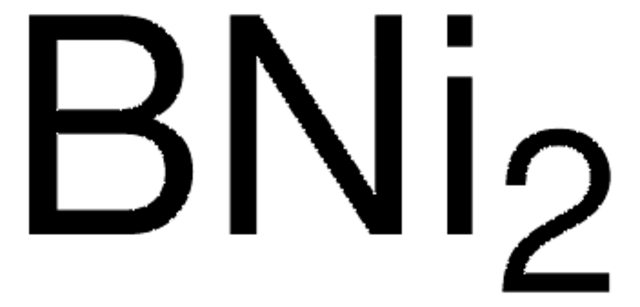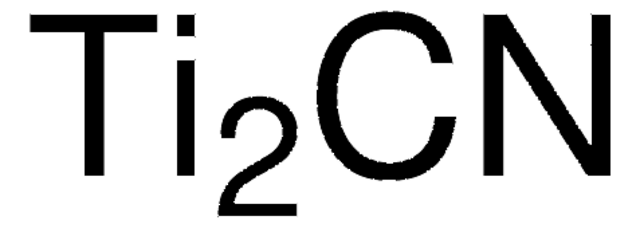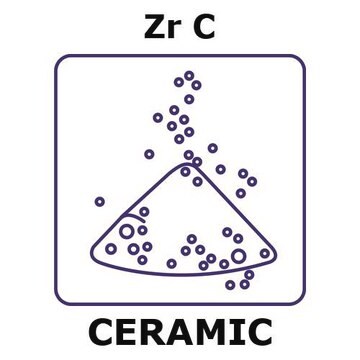336289
Titanium boride
powder, <10 μm
Autenticatiper visualizzare i prezzi riservati alla tua organizzazione & contrattuali
About This Item
Formula condensata:
TiB2
Numero CAS:
Peso molecolare:
69.49
Numero CE:
Numero MDL:
Codice UNSPSC:
12352300
ID PubChem:
NACRES:
NA.23
Prodotti consigliati
Stato
powder
Livello qualitativo
Dimensione particelle
<10 μm
Densità
4.52 g/mL at 25 °C (lit.)
Stringa SMILE
B#[Ti]#B
InChI
1S/2B.Ti
QYEXBYZXHDUPRC-UHFFFAOYSA-N
Categorie correlate
Applicazioni
- Surface Modifications to Reduce Wear in Hot Extrusion of Copper: Discusses the use of titanium boride in surface treatments to enhance the wear resistance of tools used in the hot extrusion of copper (Thewes et al., 2024).
- Stable DC Vacuum Arc Plasma Generation from a 100 mm TiB2 Cathode: Explores the use of titanium boride in generating stable plasma for coatings, emphasizing its efficiency and stability in industrial applications (Zhirkov et al., 2024).
- Structure Searches and Superconductor Discovery in XB2: Investigates various titanium boride compounds in the context of their structural properties and potential superconductivity applications (Meng et al., 2024).
Avvertenze
Warning
Indicazioni di pericolo
Consigli di prudenza
Classi di pericolo
Acute Tox. 4 Oral
Codice della classe di stoccaggio
11 - Combustible Solids
Classe di pericolosità dell'acqua (WGK)
WGK 3
Punto d’infiammabilità (°F)
Not applicable
Punto d’infiammabilità (°C)
Not applicable
Dispositivi di protezione individuale
dust mask type N95 (US), Eyeshields, Gloves
Scegli una delle versioni più recenti:
Possiedi già questo prodotto?
I documenti relativi ai prodotti acquistati recentemente sono disponibili nell’Archivio dei documenti.
I clienti hanno visto anche
Changchun Cao et al.
Huan jing ke xue= Huanjing kexue, 23(6), 108-110 (2003-03-07)
Using 365 nm and 254 nm UV lamp as light source, the degradation of dye X-3B in photolysis, photocatalysis and electrical enhanced photocatalysis was studied in this research. The result shows that the degradation rate of photocatalysis of X-3B was
Yarui An et al.
Chemistry (Weinheim an der Bergstrasse, Germany), 16(48), 14439-14446 (2010-11-03)
α-Synuclein (α-SYN) is a very important neuronal protein that is associated with Parkinson's disease. In this paper, we utilized Au-doped TiO(2) nanotube arrays to design a photoelectrochemical immunosensor for the detection of α-SYN. The highly ordered TiO(2) nanotubes were fabricated
I Dion et al.
Biomaterials, 14(2), 107-110 (1993-01-01)
Ceramics are more and more frequently under consideration for construction of blood-contacting devices, i.e. cardiac valves or cardiac assist devices. This study evaluated the haemolysis eventually initiated in vitro by ceramic powders (Al2O3, ZrO2/Y2O3, AlN, B4C, BN, SiC, Si3 N4
Marta Pegueroles et al.
Biointerphases, 7(1-4), 48-48 (2012-08-10)
An understanding of protein adsorption process is crucial for designing biomaterial surfaces. In this work, with the use of a quartz-crystal microbalance with dissipation monitoring, we researched the following: (a) the kinetics of adsorption on TiO(2) surfaces of three extensively
Pengyu Dong et al.
Nanoscale, 4(15), 4641-4649 (2012-06-22)
Graphene sheets were obtained through solvothermal reduction of colloidal dispersion of graphene oxide in benzyl alcohol. The graphene/rod-shaped TiO(2) nanocomposite was synthesized by this novel and facile solvothermal method. During the solvothermal reaction, both the reduction of graphene oxide and
Il team dei nostri ricercatori vanta grande esperienza in tutte le aree della ricerca quali Life Science, scienza dei materiali, sintesi chimica, cromatografia, discipline analitiche, ecc..
Contatta l'Assistenza Tecnica.











